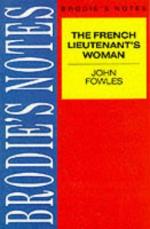|
This section contains 3,394 words (approx. 12 pages at 300 words per page) |

|
SOURCE: An introduction to The Art of John Fowles, The University of Georgia Press, 1988, pp. 1-10.
In the following excerpt, Tarbox examines the underlying theme of Fowles's novels, analyzing the trials that his protagonists undergo in order to achieve self-realization and authenticity.
In my analyses of [Fowles's] novels I have been guided by one light alone: Fowles's implicit demand that the reader of his works "see whole." Seeing whole means diving bravely into the teeming substance of each Fowles text, into the glut of detail, the language play, the eccentric modes of narration, the bizarre events, the dislocations of time, the distinctive use of history, the structural architecture of patterning and counterpoint, the deviations from genre, the flagrant use of cinematic, novel-defeating conventions, the metafictional concerns, and so on. But seeing whole is a skill each reader must learn, and Fowles teaches his reader how to see whole...
|
This section contains 3,394 words (approx. 12 pages at 300 words per page) |

|


